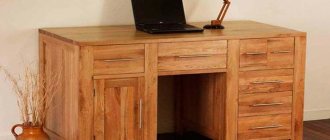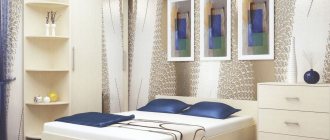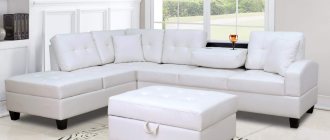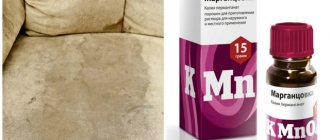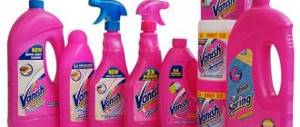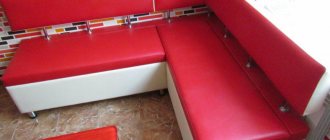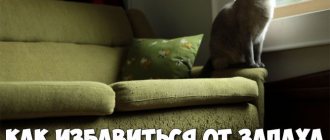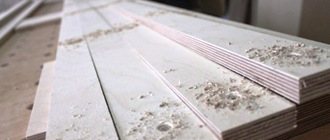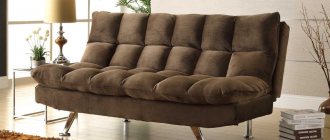Reupholstering a sofa at home or in a workshop - what to choose?
Reupholstering a sofa at home or in the workshop? What to choose? These issues must be resolved if you decide to repair your favorite sofa.
Where is it better, cheaper and better quality to do this kind of work?
Some people believe that such complex work can only be done in a workshop . And there are many arguments from specialists who believe that this procedure can only be performed efficiently on a production basis.
Others do not want to deal with the removal of large furniture and are ready to hire specialists at home.
Who is right? Let's discuss all the pros and cons of these options today.
Reupholstering a sofa at home
Pros:
- Cheaper than in a workshop. And this is understandable - the cost of renting production space does not need to be included in the price. True, not all manufacturers do this, but in any case, the cost can decrease very significantly;
- The cost of transporting furniture to the workshop and back is excluded from the estimate. And also the cost of lifting a sofa, for example, to the eighth floor. And the safety of furniture during loading and unloading, lowering and ascent is excluded. Which is just as important!
- You can watch the repair process in real time. Of course, there is no point in “standing above the soul” of the masters. But periodically taking an interest in the process, observing and monitoring it is an important point for the peace of mind of many clients.
- You will not be deprived of your favorite furniture for a long time. And you will not have to experience the inconvenience associated with disruption of your life and rest routine.
Minuses:
- For several days, and possibly weeks, strangers will be in your apartment. Therefore, someone from the family must be present nearby. This is not always convenient. And if you take into account the noise produced during work and the disorder, then before making a choice in favor of reupholstering a sofa at home, you need to take this point into account. This is especially important if you have small children or elderly people in your family.
- It is impossible to move part of the production equipment into the apartment. Therefore, it is not always possible to produce high-quality covers, especially complex ones. Difficulties may also arise with the installation of fittings and decor. As a result, the appearance of the sofa may not turn out the way you would like.
Reupholstering a sofa in the workshop
Pros:
- The quality of work, when using modern tools and equipment installed in the workshop, is much higher. The craftsmen working on your sofa are in a familiar environment, which also affects the quality of the work.
- There will be no strangers in your apartment. And you will be able to lead your usual lifestyle.
- In any case, no matter how carefully the craftsmen work, you will not have to clean up debris, scraps of material and dust after them .
- Communication with craftsmen is minimized. You placed an order, discussed the scope of work with the manager, and chose the fabric. The workers took your furniture and after some time brought it home, already updated.
Minuses:
- Furniture, in this case, will have to be transported. And in this process. as we have already said, it may be damaged. But if you have entered into an agreement with a good workshop, then careful treatment of your favorite sofa is guaranteed.
- You cannot monitor the progress of work and control it at all stages of repair. But you can visit the workshop and make sure that modern equipment is available. You can also view the catalog of completed works.
- In some cases, reupholstering a sofa at home will be cheaper than doing this work in a workshop. We have already discussed this above.
Now about the myths about reupholstering furniture at home:
1 myth. Dirt
Maybe. But it still depends on the company with which you enter into an agreement. This process, of course, is impossible without garbage at all. But, in the case of doing work from home, there is one small advantage. When disassembling furniture, its owners often find long-lost things: a fallen earring, a lost small document, a trinket dear to their hearts, etc.
And if we talk about dirt, then they are masters, in principle. litter no more. than movers. who take out your furniture.
2 myth. Time
This process will be long. if craftsmen sew upholstery in your apartment. We do it differently. After a designer and a craftsman visits your home to form an order and make measurements and calculations, we sew the upholstery covers in the workshop. In this case, the quality of work does not suffer and the time spent on work in the house is sharply reduced. It is possible to repair and reupholster the sofa during the working day.
3 myth. Quality
Many workshops scare customers with the fact that high-quality reupholstery can only be done using stationary, expensive tools (pneumatic tools: stapler and compressor). It is impossible to perform quality work with electric portable tools. This is wrong. Even for very large projects, we take these tools with us and carry out the work efficiently.
So why scare customers with this myth? Perhaps such masters have other reasons to hide their work from the eyes of clients...
Leave a request and we will answer all your questions
For a preliminary assessment, you can send photos on WhatsApp or Viber by phone +7 or attach them to the application form
Advantages of sofa upholstery in Moscow
1. Saving money
You don’t have to buy expensive furniture - you just need to replace the boring, old upholstery with a new, spectacular and inexpensive one.
2. Saving time and effort
Purchasing new interior items is usually accompanied by a tedious search for the right option. Often you have to visit several stores before finding the optimal solution. Professional upholstery of a sofa in Moscow takes 3-7 days, and you only need to choose a material and color that will organically fit into the decor. The craftsmen will do the rest, and you will take away the finished product.
3. Preserving your favorite furniture
It's no secret that furniture used to be made of a higher quality. Therefore, if the covering is worn out, covered with irremovable stains, or torn, but the frame itself is in good condition, it makes sense to change the upholstery on the sofa, and your favorite pieces of furniture will take on a completely new look.
Top 5 best fabric upholstery for a sofa
The service life of upholstered furniture depends not only on the design or transformation mechanism, but also on the material from which the upholstery is made. Nowadays, different types of coatings are used for finishing, which have their own characteristics and characteristics. In our article we will tell you which fabric is best to choose for a sofa in your home.
Selection criteria
There are generally accepted characteristics that indicate the quality of the finish and directly indicate its service life. Particular attention is paid to the following parameters:
- Color fastness. This characteristic determines the ability of the fabric to retain its original color during use - after washing or exposure to sunlight.
- Wear resistance. The criterion determines abrasion resistance. In the description of the material it may be referred to as the “Martindale test”. An indicator of more than 30 thousand revolutions is considered good.
- Density. Determines the number of threads per square centimeter of fabric. The higher the indicator, the higher quality the material is considered.
- Fire resistance. This quality characterizes the material’s resistance to fire. For furniture in the house, it is better to choose upholstery with fire resistance class 4 or 5.
- Stability. The ability of the fabric to stretch and shrink. The shrinkage index should be as close to 0 as possible.
Taking these parameters into account, we have compiled a rating of fabric upholstery that is best chosen for residential premises.
Flock
Cotton and polyester are used as the basis for flock. Then, pile is applied to the finished canvas using an electrostatic method. The result is a fabric that looks and feels like velvet.
Such upholstery for a sofa is much better than chenille or velor for use in the bedroom and kitchen. It does not absorb moisture, is very resistant to dust and has good light fastness. It is worth noting the high level of resistance to abrasion. Flock retains its original color and density throughout the entire period of use.
The disadvantage of upholstery fabric is that it is very susceptible to the effects of alcohol-based detergents.
Velours
This material is one of the most popular among buyers. This is due to the low cost of the fabric and good strength characteristics. It is also worth noting the environmental friendliness of velor fabrics: they are made from natural raw materials - cotton, wool and silk fibers.
The advantage of velor is the huge variety of appearance - there are smooth, embossed, shaped and many other types of fabric. It is thanks to this that you can easily choose upholstery for a sofa in the living room, in the office or even in the children's room.
Among the key characteristics of the material, it is worth noting its strength and safety for health. Separately, it is worth mentioning the softness of the fabric: it is pleasant to the touch and retains heat well.
Jacquard
It is a fabric with a large rapport - an ornament repeated over the entire area. A solid textured image is formed from threads of different thickness, composition and color.
The main advantage of jacquard is its increased strength. The material has a high level of wear resistance, thermal conductivity and environmental friendliness. In terms of its characteristics, it is not much inferior to natural and artificial leather.
The fabric is extremely easy to care for, so when using it you will not have to purchase additional detergents. If you don’t know what upholstery to choose for the sofa in the living room, then we recommend purchasing jacquard.
As for the disadvantages, it is worth noting the high cost, but this is easily compensated by the advantages of the material.
Chenille
The fabric is created by intertwining fibers and threads, resulting in an unusual pattern (the outward coloring resembles a caterpillar).
Chenille can be of three types: natural (obtained from cotton), artificial (with a predominance of viscose) or synthetic (from polyester or micropolyester). In its appearance and properties, the material is often compared to a tapestry.
The advantages of chenille include resistance to deformation and fading. The fabric is also antistatic, non-toxic and hygroscopic.
There are a lot of color options - they can be used as pre-dyed threads or dyed on a ready-made fabric.
Fabric selection
Before you change the upholstery of the sofa, you need to choose the appropriate material. Nowadays there are many types of fabrics available, so choosing the perfect option is not so easy. What to do? It is necessary to determine how often and under what conditions the sofa is used. When there are children, they are likely to stain the upholstery. There may also be pets that scratch the material and leave hair on the sofa. This is an important factor when choosing fabric.
There are 3 groups of materials used in sofa upholstery:
- non-woven – flocked material;
- textile - jacquard, velor, tapestry;
- natural and fabrics of animal origin - leather, fur.
Each material has its own characteristics that allow you to make a choice. The highest quality includes genuine leather - a luxurious and expensive fabric for upholstery. Such a coating can last a long time, but only if it is not scratched. When using leather, experts advise entrusting the change of sofa upholstery to professionals, since there are many nuances of this work.
Eco-leather is also sold. This is a substitute for natural fabric, but its characteristics are no worse than the main material. If you are interested in flocked material, then you need to know that if you have pets, the furniture will be covered in wool. And if the sofa is their favorite place, then there will also be sand and dirt on it. In this case, you will have to clean the furniture frequently, and this is done with a stiff brush and soapy water or a washing vacuum cleaner.
Textile material is practical and easy to use. It cuts perfectly, stretches and attaches to fragments of the sofa. It is important that the upholstery material meets the requirements of the owner of the furniture, since in the next 5-7 years you will need to be content with your choice.
Velor sofa pros and cons | Which is better - velor, matting or chenille
Velor fabric, used for furniture upholstery, is a durable and dense material with thick pile. It is made from natural or artificial fibers, and most often from a mixture of them. The fabric composition usually contains: cotton, polyamide, polyester, viscose. The material looks beautiful and solemn, thanks to its iridescent shades.
External effects of velor fabric
In order to choose which velor is best for upholstering a sofa, you need to take into account the purpose of the room in which the furniture is installed and the style of its design. The material may have a surface:
- smooth - with uniform vertical pile;
- shaped - with a pronounced texture, which is formed by vertically and obliquely located pile, having different heights and shades;
- embossed - with a pattern that is formed when the pile is laid in different directions;
- plain-dyed - with uniform coloring.
Velor furniture upholstery looks best in rooms with interiors in classic, baroque, gothic, empire, and rococo styles. The most spectacular colors are deep emerald, thick sapphire, rich ruby, turquoise, azure. In the styles of minimalism, loft, and hi-tech, sofas with velor upholstery look tasteless.
For upholstery of sofas, they choose furniture fabric, which differs from suit fabrics in its thick pile. A modern type of velor used for upholstering sofas is micro-velor, which has excellent performance characteristics. Its basis is microfiber, which prevents the attraction of dust and dirt, fading under the influence of ultraviolet radiation, and resistance to moisture.
Pros and cons of using velor for sofa upholstery
Advantages of velor upholstery:
- aesthetics;
- elasticity, which provides resistance to deformation and accelerated wear even in areas with bends;
- for fabrics with synthetic and mixed fibers - color fastness to ultraviolet radiation, practicality, ease of care;
- better antistatic characteristics compared to other long-pile fabrics;
- hypoallergenic.
A relative disadvantage of this material is its high cost, which is justified by its positive characteristics.
How to care for a sofa with velor upholstery?
Caring for velor upholstery is not difficult if it is carried out regularly using a special brush or vacuum cleaner with a rubber nozzle strictly in the direction of the pile. For care, do not use fluffy rags, which can leave whitish spots on the fabric. It is not recommended to use powdered cleaning compounds, bleaches or products containing solvents.
Pollution cleaning technology:
- wet a microfiber cloth in a mild soap solution;
- Apply the solution to the contaminated area, rub the microfiber cloth in the direction of the pile without applying strong pressure;
- dry naturally.
The most resistant to all types of dirt and ultraviolet radiation is velor fabric coated with Teflon.
What to choose for sofa upholstery - chenille or velor?
Chenille is a durable furniture fabric with imitation twisted pile. For its production, synthetic fibers or mixed threads of synthetics and viscose are used. Acrylic fibers provide the material with special strength. The advantages of this material: softness and a feeling of warmth due to the fleecy surface, absence of wrinkles, resistance to foreign odors, cozy and presentable appearance.
Chenille is not resistant to animal claws and metal elements of clothing, which cause puffs to form on it. Therefore, in intensively used rooms, where children and pets are often present, velor, which is more durable and easier to care for, has performed better. In addition, chenille is poorly resistant to ultraviolet radiation. Chenille is a presentable fabric that is best used in high-status rooms.
Velor or matting?
Matting is a durable natural material, consisting of 100% cotton, linen or wool threads. It has a rough texture, looks like burlap, and does not wrinkle. The advantage of this option is the budget cost. The matting fits organically into the interiors of ethno- and eco-styles.
This type of upholstery, unlike velor, is not suitable for formal interiors and does not withstand the claws of pets at all. To remove stubborn stains, you can use a sponge lightly moistened with soapy water. Basically, matting, which does not tolerate moisture and cleaning agents, is used in rooms where there are no pets or small children.
Velor or flock?
Flock is a non-woven material made from synthetic fibers - acrylic, nylon, polyester. Outwardly, it imitates expensive fabric, but in fact belongs to the budget price category. It is characterized by:
- strength, resistance to animal claws;
- moisture resistance - any stains can be washed with alcohol-free detergents;
- UV resistance.
Disadvantages of flock: weak antistatic properties, which means attracting dust and dirt, absorbing foreign odors. Expensive and high-status velor is more suitable for expensive interiors; practical and cheap flock is more suitable for children's rooms and verandas.
Source: https://mesto-mebeli.ru/blog/harakteristiki-divanov-iz-velura/
How to choose the right fabric for upholstered furniture?
Articles>How to choose the right fabric for upholstered furniture? The choice of furniture upholstery material is no less important than the choice of its color or pattern. Stylish eco-leather or pleasant-to-touch velor, aristocratic tapestry, modern flock, or maybe even textured and practical matting - each of the fabrics is attractive in its own way. The main thing is to understand the features.
Where you place the sofa or armchair is of great importance for the selection of fabric: eco-leather upholstery for office furniture is obviously not suitable for a cozy children's room or a delicate bedroom. The ideal sofa for the living room is soft and at the same time wear-resistant. This applies not only to the seat filling, but also to the upholstery material.
Fabrics containing synthetics (flock, chenille, velor and leather) will be the best solution. It is better to choose a folding sofa for the bedroom with upholstery containing both synthetic - polyamide or polyester, and natural fibers - cotton, wool, linen. Such fabrics include jacquard or chenille. They guarantee a pleasant appearance and durability.
A sofa for a children's room should be environmentally friendly and simple, and the upholstery should be hypoallergenic and easy to clean. For example, printed cotton fabrics (jacquard) are easy to clean and will retain their appearance for a long time. Office furniture is presentable in appearance and easy to clean. Such upholstery includes natural and eco-leather.
Armchairs and sofas made from these materials will become the best business card and will not require much effort during cleaning.
The next step is to learn what makes each fabric good and what its weaknesses are. This will help narrow down the range of suitable materials and make a choice.
Modern artificial leather on a fabric basis. This material is pleasant to the touch, soft and elastic, but at the same time durable and can last a very long time. Eco-leather is many times superior to natural leather in terms of vapor and air permeability. Furniture with eco-leather upholstery is suitable for both home and office spaces: it looks respectable and is easy to care for.
What's good:
hypoallergenic, durable and pleasant tactile sensations.
Things to remember:
susceptible to severe damage from the claws of pets and sharp objects. Non-woven material with a velvety feel. The art of gluing finely cut fibers (they are called “flock”) using glue onto a fabric base originated in the 1st century AD, in Ancient China. Since then, flock has “learned” to imitate velor, chenille, leather, suede, while maintaining softness, brightness, strength and its low cost. And its Teflon version gives the furniture upholstery waterproof and dirt-repellent properties. If the flock contains viscose, the upholstery will be more pleasant to the touch than flock based on polyamide fibers.
What's good:
inexpensive, does not fade, is not afraid of moisture and temperature fluctuations, is easy to clean, does not stick to animal hair, and does not leave claw marks.
Things to remember:
electrifies, attracts dust, absorbs odors.
Microfiber or faux suede
Modern synthetic material with amazing mechanical properties. Does not wear out, does not electrify, does not absorb liquid, is hypoallergenic and retains color. Microfiber is flexible and has a luxurious-looking texture, making it ideal as upholstery for upholstered living room furniture.
What's good:
durable, has a rich range of colors, has no static charge, and is waterproof.

